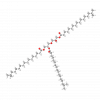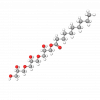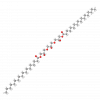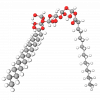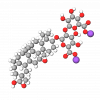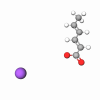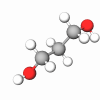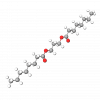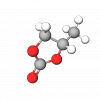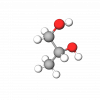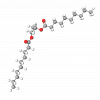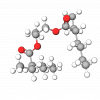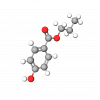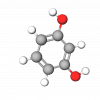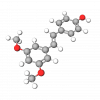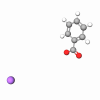Polyglyceryl-2 Sesquiisostearate is a light yellowish liquid used as a versatile emulsifier in water-in-oil emulsions. With this emulsifier formulations achieve an excellent spreading behavior and an appealing skin feeling with a shiny appearance.
Organic compounds
Organic compounds are an inherent part of skin care products. These ingredients are structurally similar to natural body compounds, making them efficient in many functions. For example, they easily penetrate the layers of skin, stimulate the synthesis of skin proteins, fight free radicals, and ''dissolve" dead skin cells. Thus, organic compounds visibly ameliorate skin wrinkling, sagging, and scaling.
Polyglyceryl-2 Triisostearate is a diglycerin triester with isostearic acid.
Polyglyceryl-3 Caprate is an ester of capric fatty acid with polyglycerol containing three glyceryl units. It is a PEG-free, biodegradable, and water-soluble surfactant, that enables clear final products.
Polyglyceryl-3 Diisostearate is a triglyceryl diester of isostearic acid. It is an unusually substantive, clear, odor-free, occlusive emollient that provides excellent inorganic pigment-dispersing properties in color cosmetics. It forms a film on the skin, leaving a light, non-tacky feel.
Polyglyceryl-3 Distearate is a diester of stearic acid with polyglycerol (3 moles), a nonionic emulsifier for cosmetic oil-in-water emulsions manufactured by reacting polyglycerol esters of defined composition with stearic acid.
Polyglyceryl-3 Laurate is a monoester for laruic acid with a polyglycerol with three glycerin units. It is a clear to slightly hazy viscous liquid with a slight characteristic odor.
Polyglyceryl-3 Oleate (Triglycerol monooleate) is a polyglycerol ester prepared from glycerine and edible oils or fatty acids.
Ingredient of choice for green cosmetics, Polyglyceryl-6 Distearate is an oil-in-water emulsifier that offers an excelle
Potassium Azeloyl Diglycinate is a derivative obtained from the condensation of Azelaic acid and Glycine, a multifunctional skincare ingredient with the benefits of its ancestors and without weak points such as instability in formulations, pure solubility, and sensory profile.
Potassium Glycyrrhizinate (Dipotassium Glycyrrhizinate) is the potassium salt of Glycyrrhizin (or glycyrrhizic acid) a co
PPG-2 Hydroxyethyl Cocamide is a pale yellow liquid. It is a highly effective, multifunctional, nonionic surfactant that offers a wide range of benefits to rinse off personal care products.
PPG-2 Hydroxyethyl Coco/Isostearamide is an active liquid surfactant that replaces DEA-alkanolamides. It provides excellent foam stabilization and fragrance solubilization in formulations.
PPG-3 Benzyl Ether Myristate is a multifunctional emollient ester that provides all of the benefits of silicone, a silicone-like shine, and similar feel characteristics, plus additional benefits unavailable with silicones. It is an off-white liquid with a low odor.
Propanediol Dicaprylate is a diester of propanediol and caprylic acid derived from vegetable raw materials. It is used in organic cosmetics products as a natural replacement for silicones.
Propyl Alcohol (1-propanol) is a medium-volatility, polar solvent of very high purity and mild odor. Purest 1-propanol is specially intended for cosmetic applications.
Propylene Carbonate is a clear polar solvent with high boiling and flash points. It has a low order of toxicity and a mild, ether-like odor. It is stable under storage and handling conditions and is not hygroscopic or corrosive.
Propylene Glycol is diol alcohol (it contains two hydroxy groups in 1 and 2 positions—propane-1,2-diol), a humectant or humidifying and delivery ingredient used in cosmetics. It is a water-white, viscous, odorless, hygroscopic liquid with low volatility and is readily soluble in water.
Propylene Glycol Dicaprate is a diester of selected high-purity vegetable fatty acids and propylene glycol. It is a clear viscose liquid completely miscible with mineral oils and pure ethanol.
Propylene Glycol Diethylhexanoate is a branched diester of propylene glycol, a clear liquid with a neutral odor. Fully refined and deodorized, it has exceptional stability and is miscible with most cosmetic solvents, including ethanol.
Propylene Glycol Stearate SE is a primary emulsifier for lotions and low-viscosity creams. It is a self-emulsifying (SE) option of Propylene Glycol Stearate with sodium and/or potassium stearate contamination.
Propylparaben is a propyl ester of p-hydroxybenzoic acid, a widely used broad-spectrum preservative used in personal care products, pharmaceuticals, and some foods. It has intensive growth-inhibiting effects on mold fungi, yeasts, and bacteria.
Resorcinol, or 1,3 dihydroxybenzene, is a common chemical intermediate that finds utility in applications ranging from wood glue resins, leather dyes, pharmacology, and permanent hair-coloring products.
Resveratrol Dimethyl Ether (Pterostilbene) is a phytoalexin found in grapes and berries. Structurally close to resveratrol and exhibiting similar properties, it is one of the primary antioxidant elements of blueberries.
Gamma-linolenic acid (GLA) is the second most abundant essential fatty acid in the skin and possibly even more important than linoleic acid for maintaining effective moisture barrier properties.
Sodium C12-15 Pareth-15 Sulfonate is a sulfonate-capped linear alkyl ethoxylate, an anti-irritating anionic surfactant. Its structure is unique among commercially available surfactants, with a hydrophobic portion comprising 15 moles of ethoxylation terminated with a sulfonate anionic gr
